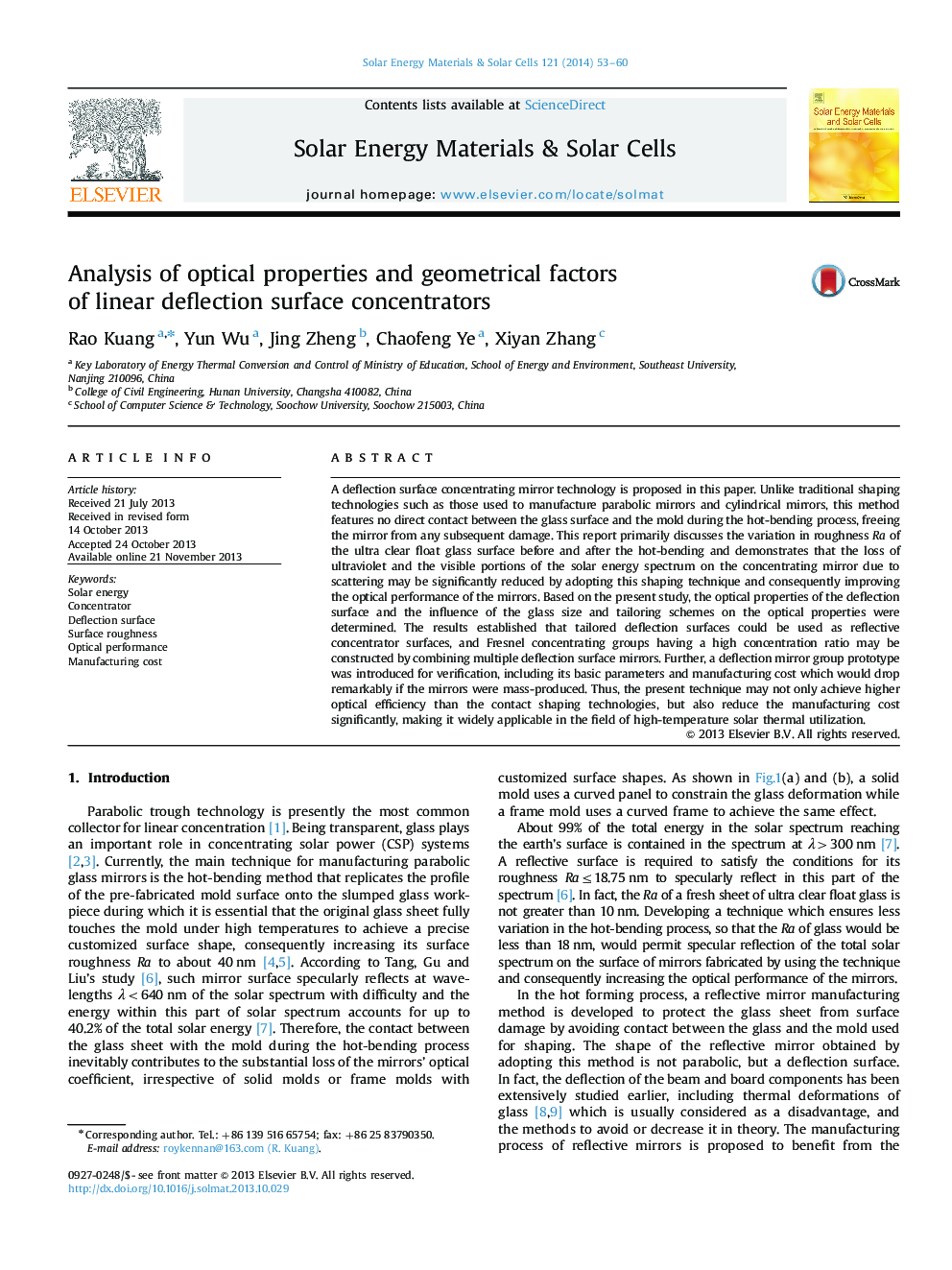| Article ID | Journal | Published Year | Pages | File Type |
|---|---|---|---|---|
| 78205 | Solar Energy Materials and Solar Cells | 2014 | 8 Pages |
•Deflection surface mirror is a novel non-contact manufacturing technology.•The concentration ratio could be improved using an appropriate tailoring scheme.•A Fresnel concentrating group is built combining multiple mirrors.•A linear deflection surface mirror group verification prototype was built.•The large-scale manufacturing cost of the mirrors is about RMB 156 yuan/m2.
A deflection surface concentrating mirror technology is proposed in this paper. Unlike traditional shaping technologies such as those used to manufacture parabolic mirrors and cylindrical mirrors, this method features no direct contact between the glass surface and the mold during the hot-bending process, freeing the mirror from any subsequent damage. This report primarily discusses the variation in roughness Ra of the ultra clear float glass surface before and after the hot-bending and demonstrates that the loss of ultraviolet and the visible portions of the solar energy spectrum on the concentrating mirror due to scattering may be significantly reduced by adopting this shaping technique and consequently improving the optical performance of the mirrors. Based on the present study, the optical properties of the deflection surface and the influence of the glass size and tailoring schemes on the optical properties were determined. The results established that tailored deflection surfaces could be used as reflective concentrator surfaces, and Fresnel concentrating groups having a high concentration ratio may be constructed by combining multiple deflection surface mirrors. Further, a deflection mirror group prototype was introduced for verification, including its basic parameters and manufacturing cost which would drop remarkably if the mirrors were mass-produced. Thus, the present technique may not only achieve higher optical efficiency than the contact shaping technologies, but also reduce the manufacturing cost significantly, making it widely applicable in the field of high-temperature solar thermal utilization.
